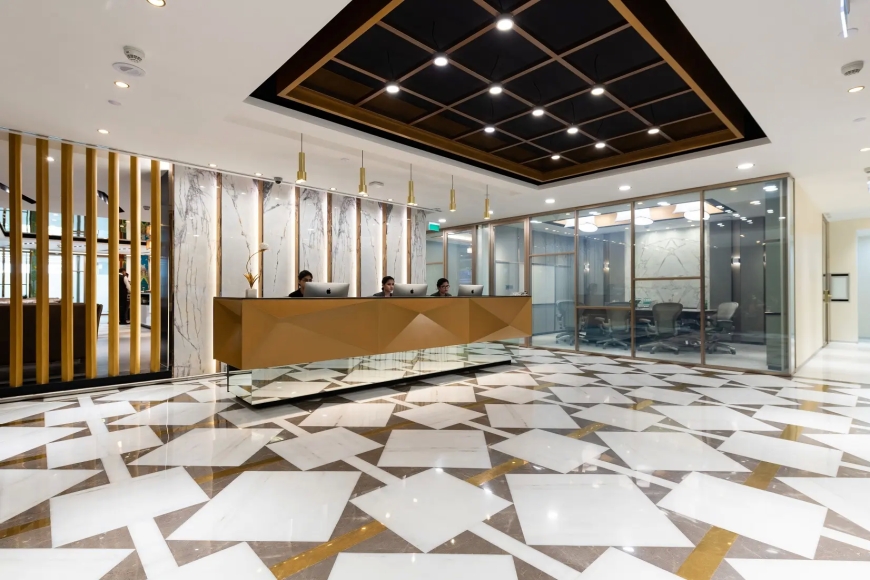Evolution of workplace design across generations
The workplace is evolving, shaped by generational shifts, technological advancements, and data-driven decision-making. From rigid cubicles to open, tech-integrated, multi-functional, and inclusive spaces, office design continues to transform to enhance productivity, engagement, and well-being.

The workplace is evolving, shaped by generational shifts, technological advancements, and data-driven decision-making. From rigid cubicles to open, tech-integrated, multi-functional, and inclusive spaces, office design continues to transform to enhance productivity, engagement, and well-being.
Data-led design
Data-driven insights now guide workplace design, making spaces more efficient and aligned with employee needs. Workplace analytics, sensor technology, and AI help businesses optimize layouts, enhance collaboration, and support hybrid work models. By analyzing usage patterns, organizations can create adaptive environments that balance teamwork and individual focus. These insights help companies eliminate underused spaces, enhance energy efficiency, and provide employees with personalized workspace experiences.
Furthermore, data analysis enables organizations to anticipate future needs and proactively implement design changes. Understanding peak office occupancy times, preferred seating arrangements, and workflow patterns ensures that spaces evolve in response to workforce behaviors. By continuously refining layouts and amenities based on real-time feedback, companies can maintain environments that support efficiency and innovation.
Technology-driven spaces
With digital transformation, employees expect seamless tech integration. Smart lighting, IoT-controlled climate systems, AI-powered meeting bookings, and immersive collaboration tools like VR/AR enhance efficiency and connectivity. Automated desks, noise-canceling environments, and high-speed connectivity enable frictionless experiences, whether working remotely or in the office. Touchless entry systems and voice-activated assistants further streamline daily operations, reducing friction and enhancing safety in modern workplaces.
The rise of hybrid work has also spurred investment in virtual collaboration tools, allowing seamless interaction between in-office and remote teams. High-definition video conferencing, interactive whiteboards, and digital project management platforms bridge communication gaps, ensuring productivity regardless of location. These innovations empower employees to work flexibly without compromising efficiency or engagement.
Multi-functional spaces
The shift toward flexible work models has increased demand for adaptable spaces. Modular furniture, hot-desking, soundproof pods, and communal lounges cater to diverse work styles. Meeting rooms double as event spaces, and breakout areas become brainstorming zones, fostering innovation and creativity. The rise of activity-based working allows employees to choose spaces that best suit their tasks, improving comfort and productivity. These multi-purpose spaces help organizations maximize real estate efficiency while catering to both collaborative and individual work preferences.
Additionally, wellness-focused designs are gaining prominence, with biophilic elements, natural lighting, and relaxation zones improving mental well-being. Employees benefit from spaces that encourage movement, such as standing desks, treadmill workstations, and outdoor work areas, which boost overall health and job satisfaction.
Inclusive workspaces
Diversity and accessibility are at the forefront of modern design. Inclusive offices feature ergonomic furniture, height-adjustable desks, gender-neutral restrooms, quiet zones for neurodiverse employees, and wellness rooms. Cultural inclusivity is also reflected in workspace aesthetics, fostering a sense of belonging and engagement. Beyond physical inclusivity, companies are embracing flexible work policies, ensuring employees have the support they need regardless of location or ability. Acoustic design improvements help those with auditory sensitivities, while dedicated wellness programs promote mental and physical health.
Employers are also prioritizing mental health by incorporating designated meditation areas, on-site counselling services, and stress-reducing design elements. Spaces designed with inclusivity in mind contribute to a more equitable and supportive work environment, helping employees thrive both professionally and personally.
Workplace design is dynamic, evolving with workforce needs. Companies that embrace data-driven decision-making, integrate technology, promote flexibility, and prioritize inclusivity will stay competitive while creating environments that inspire innovation and well-being. The future of workspaces is not static but fluid, continuously adapting to the needs of a changing workforce. By combining thoughtful design with emerging technologies and inclusive principles, businesses can create engaging environments that support both productivity and employee well-being.
As organizations continue to adapt, those that invest in smart, sustainable, and human-centric design will shape the future of work. By fostering spaces that reflect evolving expectations, businesses can attract and retain top talent while driving long-term success in an increasingly digital and diverse world.
Author:








